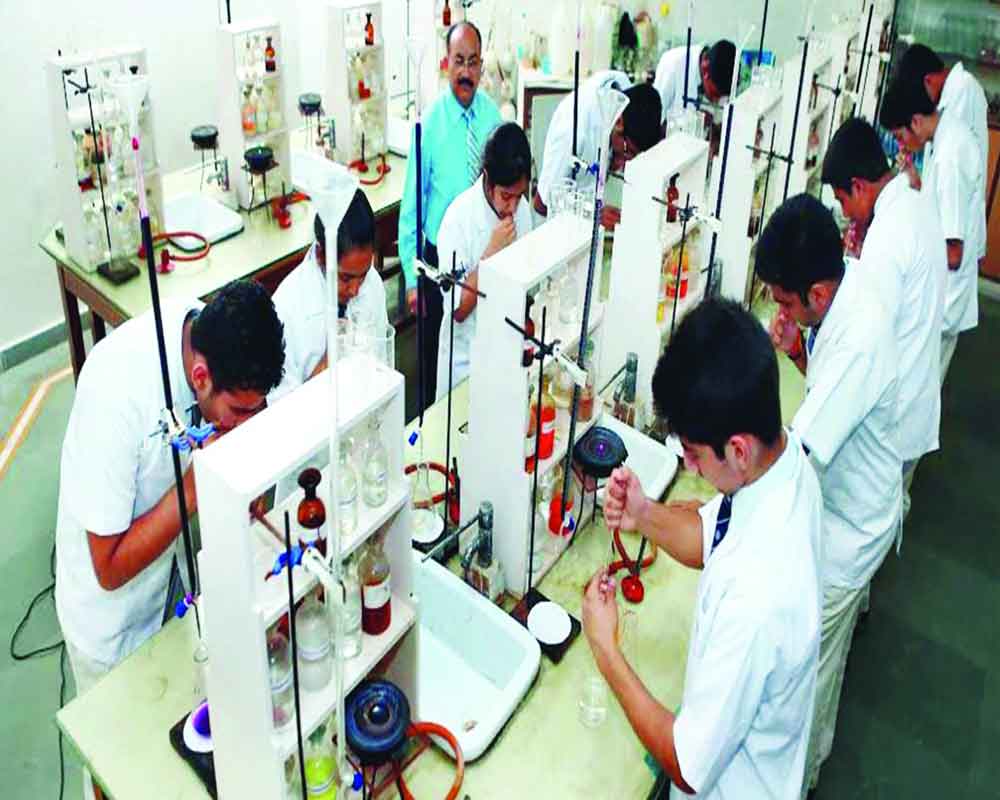Backed by substantial funding and strategic direction, Anusandhan National Research Foundation seeks to address societal challenges while creating a research culture
The role of research and development (R&D) in nation-building is pivotal, as it drives economic growth, boosts global competitiveness, provides solutions to societal challenges, equips learners with 21st-century skills, and enhances defense capabilities critical to national security and strategic positioning. R&D investment not only strengthens global influence but also allows for the development of tailored solutions to local needs. A strong focus on research fosters a technically empowered youth, who, in turn, fuel entrepreneurship and innovation.
India’s current R&D expenditure is only 0.66 per cent of its GDP. Despite this, the country boasts a robust scientific foundation, ranking third globally in research publications and PhD graduates. In 2022, India published over 300,000 research papers, demonstrating its commitment to knowledge advancement. Furthermore, India ranks sixth in the world for patent grants. The scientific community has long called for increasing R&D spending to at least 2 per cent of GDP to scale up research that addresses societal needs. As Bill Gates once said, “I believe in innovation, and that the way you get innovation is you fund research and you learn the basic facts.” Similarly, Albert Szent-Gyorgyi noted, “Research is all about four things: brains to think, eyes to see, machines to measure, and money.”
India’s research ecosystem is set for a transformative shift with the launch of the Anusandhan National Research Foundation (ANRF), a significant initiative by the Modi government aimed at enhancing research and innovation across the nation. ANRF is poised to promote interdisciplinary research, cultivate a strong research culture, and position India as a global leader in science and innovation.
ANRF will receive Rs 50,000 crore over five years, with contributions from industry, philanthropists, and both domestic and international sources, including government funds. Industry participation is crucial to ensure that research outcomes align with real-world needs and are effectively implemented. ANRF’s mandate covers strategic direction in research, innovation, and entrepreneurship across disciplines such as natural sciences, engineering, technology, environmental sciences, health, and agriculture. Its goal is to foster collaborative research essential to solving the pressing issues facing humanity.
The transition from the Science and Engineering Research Board (SERB) to ANRF marks a significant shift in research priorities. Initiatives such as doubling private sector involvement in R&D, increasing full-time researchers, boosting women's participation, and creating a national repository of STI data are expected to spur innovation. According to Dr. Abhay Karandikar, Secretary of the Department of Science and Technology, this shift will be crucial for fostering an innovation-driven environment.
At ANRF’s first Governing Board meeting, chaired by PM Narendra Modi, key decisions were made to overhaul the research ecosystem. Modi emphasised the need to remove obstacles in research, set ambitious goals, and pursue breakthrough research that addresses national needs. He stressed that while problems may be global, their solutions must be tailored to India’s unique context.
Several initiatives were approved, including the launch of programs to build research capacities in universities with underdeveloped research cultures, using a hub-and-spoke model with established institutions. ANRF will also focus on mission-mode research in priority areas such as Electric Vehicles, Advanced Materials, Smart Infrastructure, Solar Cells, and Health Technologies. Additionally, the decision to establish Centers of Excellence for interdisciplinary research in humanities and social sciences will promote multidisciplinary efforts. The board also highlighted the need for flexible funding mechanisms to ensure ease of conducting research and emphasized the importance of fundamental research alongside applied research.
The ANRF faces the monumental task of driving reforms that create tangible societal impact. It aims to shift research priorities from volume-based output to quality-driven innovation, with the ultimate goal of making India self-reliant and a global research leader. The Foundation will support translational research beyond Technology Readiness Level-3 (TRL-3), ensuring research outcomes are applied in real-world contexts. This aligns with PM Modi’s vision of a ‘Viksit Bharat@2047.’
The operationalization of ANRF marks a decisive step in revolutionizing India’s research and innovation landscape. It promises faster decision-making and reduced response times to meet the needs of the S&T system.
This development positions India’s scientific community to adopt global best practices in research funding and promotion. With ANRF now functional, the scientific community is eagerly anticipating the realization of long-awaited reforms, including the exemption of GST on scientific equipment.
(The writer is vice chancellor of Punjab university; views are personal)


























